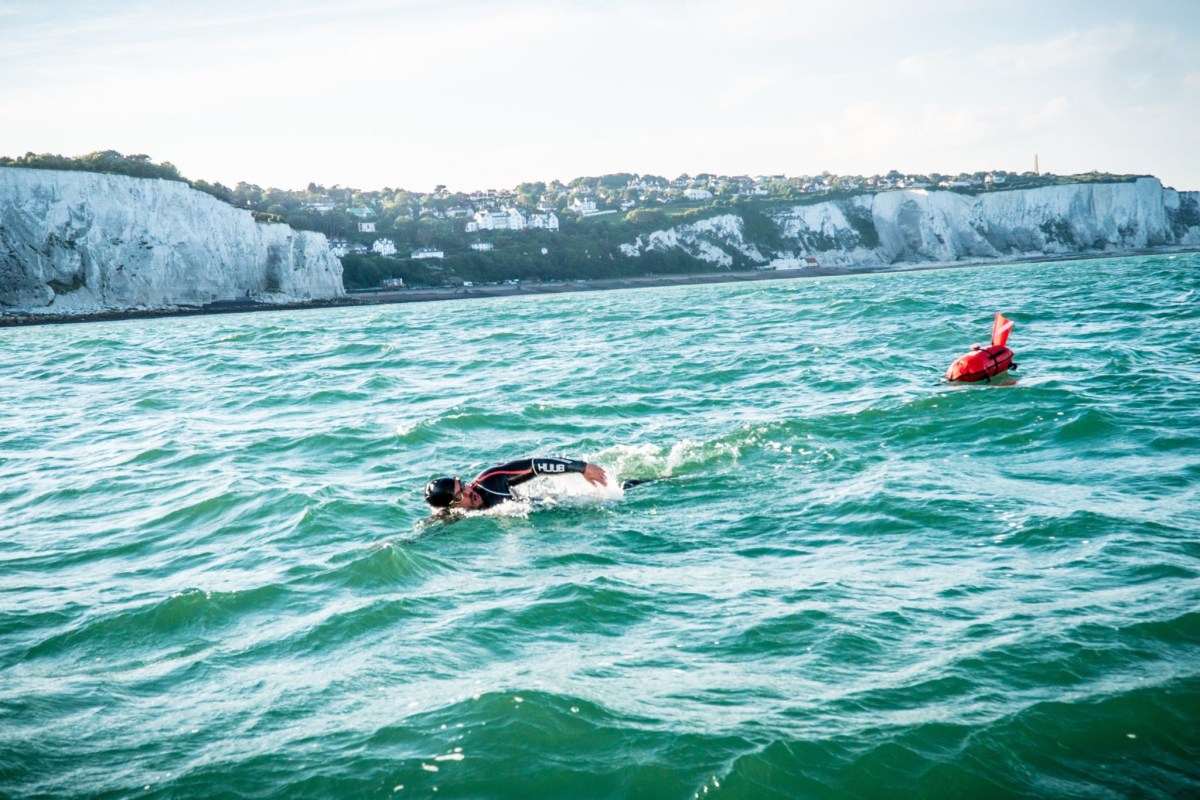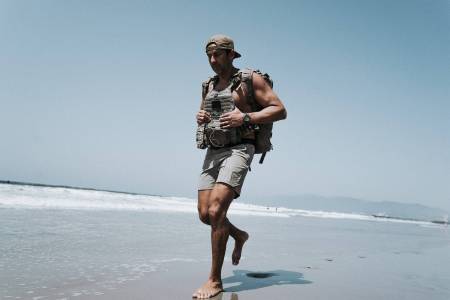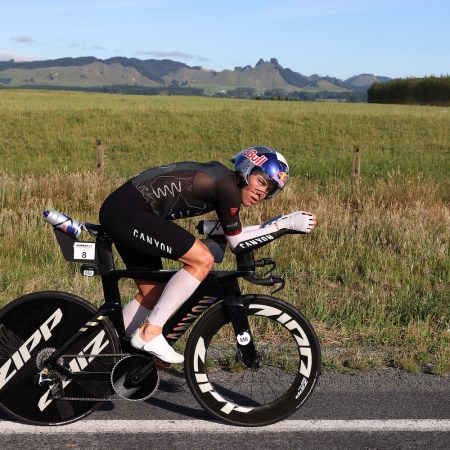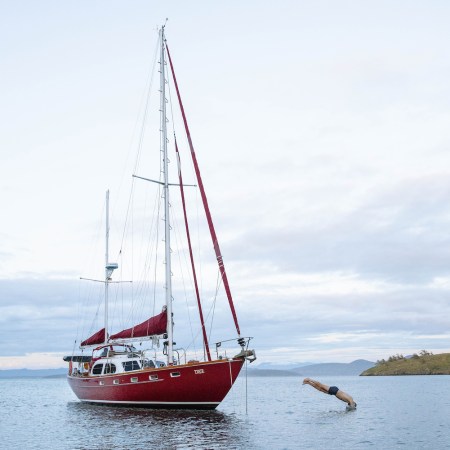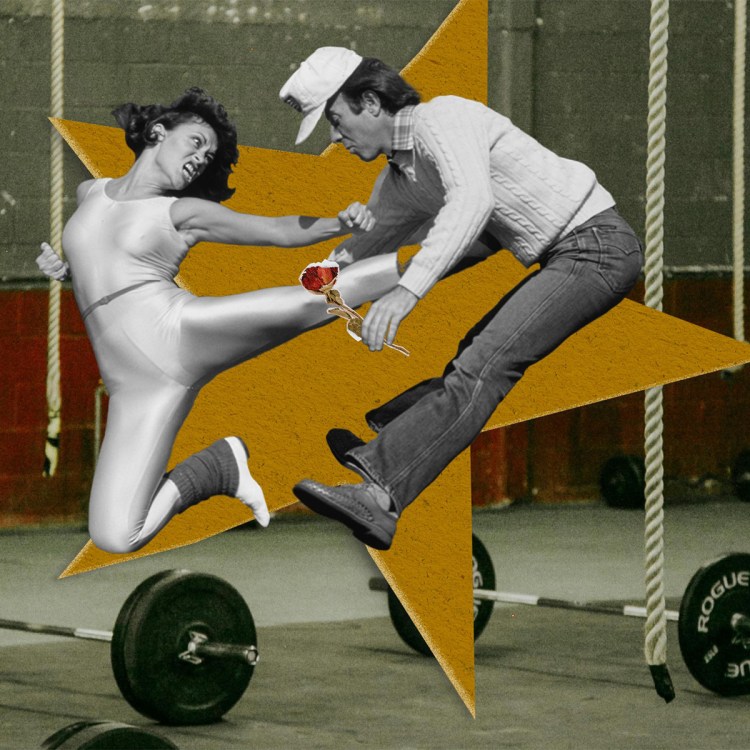Ross Edgley is an “extreme adventurer” by trade, who’s made his name pulling off physical feats the rest of us consider impossible. Of the many records the former water polo player has set during his impressive career, none are quite as extraordinary as his swim four years ago around the entire island of Great Britain. During the course of 157 days, supported by the sailing boat Hecate, Edgley swam 1,792 miles through icy waters without touching land.
Little wonder Chris Hemsworth recruited Edgley to join him on his new Disney+ show Limitless, to study the perceived parameters of human performance. Edgley‘s circumnavigation of Great Britain taught him a number of lessons on cold water therapy, arm strength, resilience and mental toughness. Below, he gives insight into the highs and lows of the incredible adventure. His story appears as told to InsideHook correspondent Charles Thorp, and has been edited and condensed for clarity.
There are two stories for how I came to the idea of swimming around Great Britain. The first begins with Captain Webb, who swam across the English Channel in 1875 after the whole world told him it was impossible. Everyone thought that the water was too cold and the tides were too strong. But he believed he could do it, so on a diet of beef broth and brandy he breaststroked the entire way. The front crawl was considered uncouth at the time. That was a story I was told all the time growing up, which drew me to taking on similarly challenging physical tests.
The other story begins after I set out to attempt the longest current neutral swim, which refers to any swim that’s completed without assistance from the tides. I ended up doing a 48-hour swim with the Royal Marines while I was training for the feat. I finished it, and afterward remember sitting in the mess hall when this older officer with an amazing mustache came over to me and asked, “What are you doing?” I was nursing trench foot that I’d picked up from being in the water so long. I told him I was training to do the world’s longest current neutral swim.
This older Royal Marine listened to me, sipped his tea, looked me up and down, then said, “Can I be honest with you, young man?” I said that he could, and he added, “That just sounds a bit shit.” Shocked, I asked him what he would prefer that I did. He replied, “You just need to man up and swim around Great Britain.” So many great feats have been attempted on account of a gentleman’s bet. I believe I could say that this was one as well.
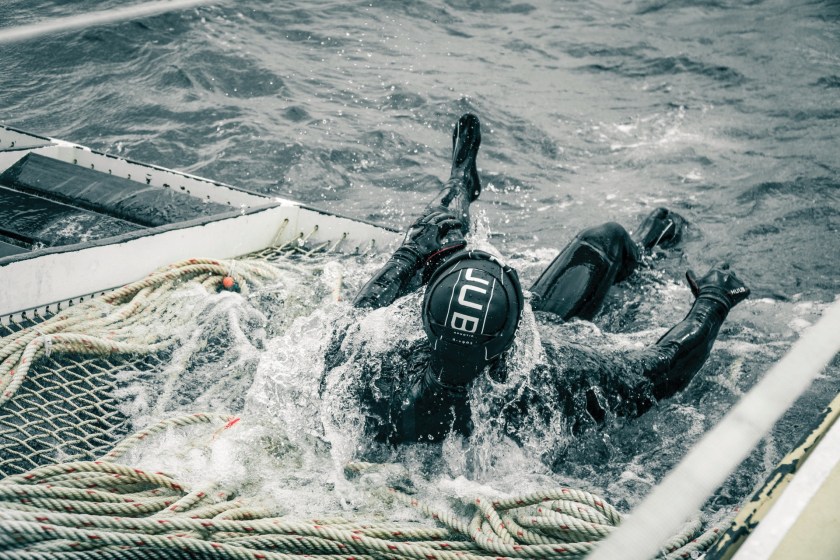
Once I knew in my mind that it was happening, I set out to optimize my training for this new kind of swim. In the realm of conventional sport, swims are done for speed. You’re figuring out how fast you can go while accumulating lactic acid. But this stunt felt more akin to that heroic age of the Arctic explorers that I loved: Amundsen, Shackleton, Robert Falcon Scott.
I knew early on that this attempt was going to be just as much a feat of sailing as it was of swimming. I couldn’t swim the entire way in one go, so I needed a boat where I could sleep for roughly six hours at night before getting back in. I started to put the feelers out to the sailing community to see if anyone was prepared to give it a try with me. I was able to connect with Captain Matt Knight of the Hecate, who I have to give a lot of credit for getting me through.
For the training, it wasn’t as much about making me the fastest swimmer in the world, as it was about making me the strongest and most physically robust swimmer I could be. I really leaned into my strength training. When you look at a concept like mechanotransduction and how it can benefit not just the muscles, but also the tendons and ligaments, there were a lot of reasons to strength-train before a swim like this. I needed to know that my shoulders were going to be able to take the number of rotations I was doing, because out there in the ocean I wasn’t just swimming, I was surviving.
Navy SEAL Kaj Larsen’s Guide to Becoming a Better Swimmer
The best waterman in his class talks dolphins, breath exercises and something called “surf torture”I built a program that included a lot of brachiating (hanging exercises) to really dial in my shoulder joint. I wanted to develop that kinetic chain all the way through the muscles, without leaving any weaknesses. One of the other instruments I turned to for that was the medicine ball. I’d lay with my back flat on the bench and toss balls of varying weight up in the air to catch them. That movement invites an eccentric contraction similar to what would happen when I was getting beat by the waves. On top of everything, I needed as many reps in the ocean as possible. I needed to confirm I had the gas tank required to complete the task, which meant a lot of aerobic conditioning in addition to that strength prehab.
The other element I needed to prepare for was the cold. I was at an advantage, having grown up in cold regions, and am no stranger to diving into ice water. I know there are a lot of people familiar with cold water plunges, which have tremendous health benefits, but swimming for distance in truly cold water is very challenging. There’s a vasoconstriction of the capillaries, and all of your blood moves away from your extremities, which makes your arms and legs feel like lead.
That’s less than ideal when you’re trying to cover distance. Because my head was going underwater fairly often, I couldn’t hide from that cold shock that you get whenever the cold water hits your face. There was no relief when my head came back above the waterline, either. On top of that: when the current’s swirling around you under the surface, that moving water can feel like a wind chill going through your body.
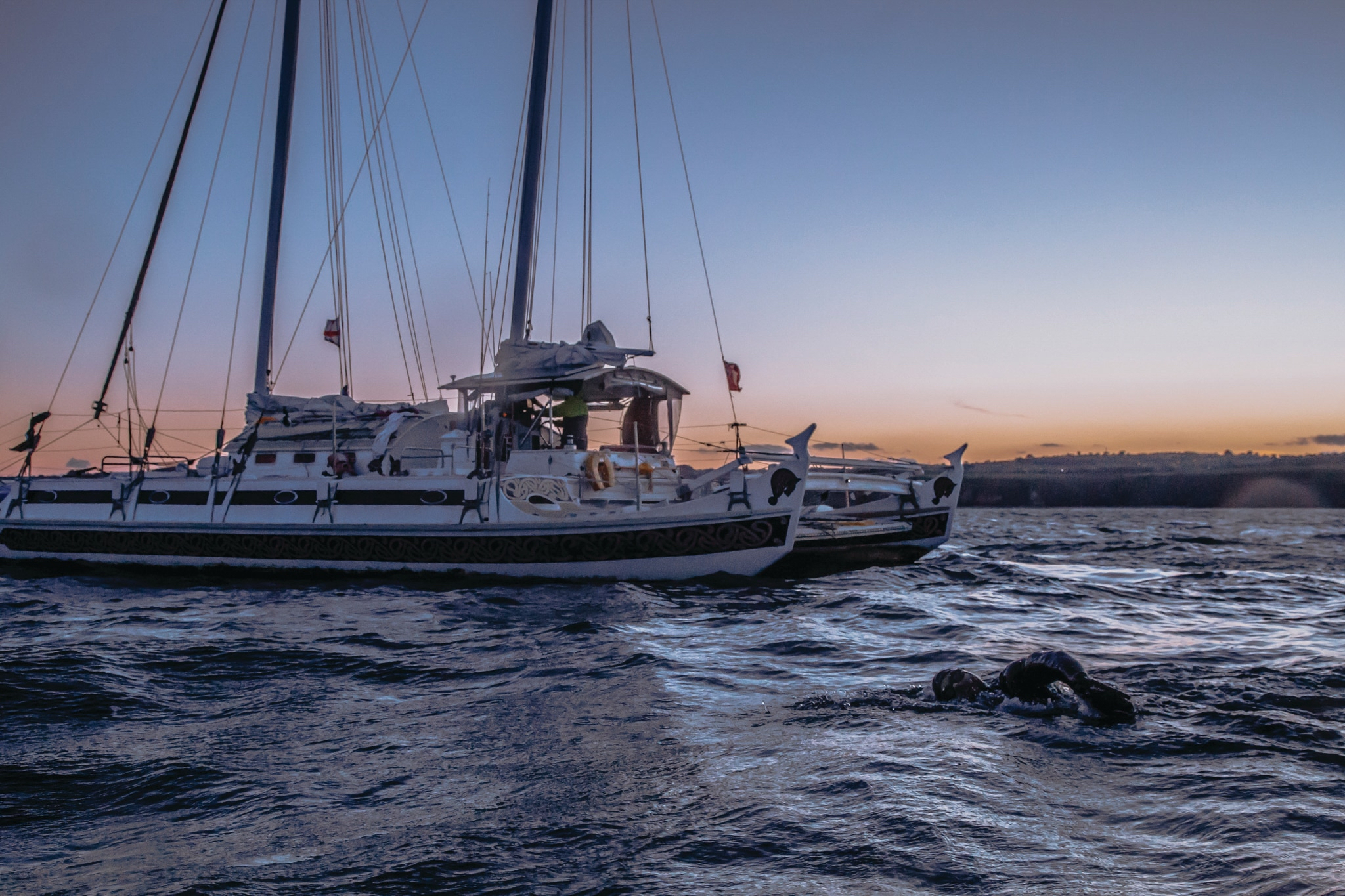
I was young and naive when I first started the swim. I was thinking of the challenge like an athlete preparing to win against his opponent. I had my little notepad where I foolishly wrote how many miles I was going to do each day, and how many days that came out to. I was humbled pretty quickly. The ocean came, slapped me around and made it clear that my day was going to finish whenever it decided.
There’s a reason that sailers and captains reach their place on the boat by having time on the water, by seeing how it works and how it can benefit or break you. I also learned a lot from surfers before I started my swim. They really understand what it takes to move your body through ocean water that doesn’t always want to cooperate with you. There are different methods of attacking a swim with a tailwind, crosswind or headwind. I learned some of them the easy way, some of them the hard way.
Every morning began with me looking out at the ocean to get a feeling for whether I was going to be dancing with the ocean that day or fighting it. Either way, I was getting in there. I would eat my pre-swim snack, put on the wetsuit and then dive in where I left off the last time and swim for another six hours, occasionally more depending on the part of the route.
The route was everything, which is why Captain Knight was so crucial to my success. Every single day, he was putting me in the places I needed to be. I needed to have a team there to support me, cook meals and deal with the physical ramifications of being in the water working for that long. I had rashes from the jellyfish bites, wounds around my neck from all of the chafing and my tongue was falling off due to all of the salt. I was constantly fighting hypothermia. I didn’t have time to think about anything else but staying the course.
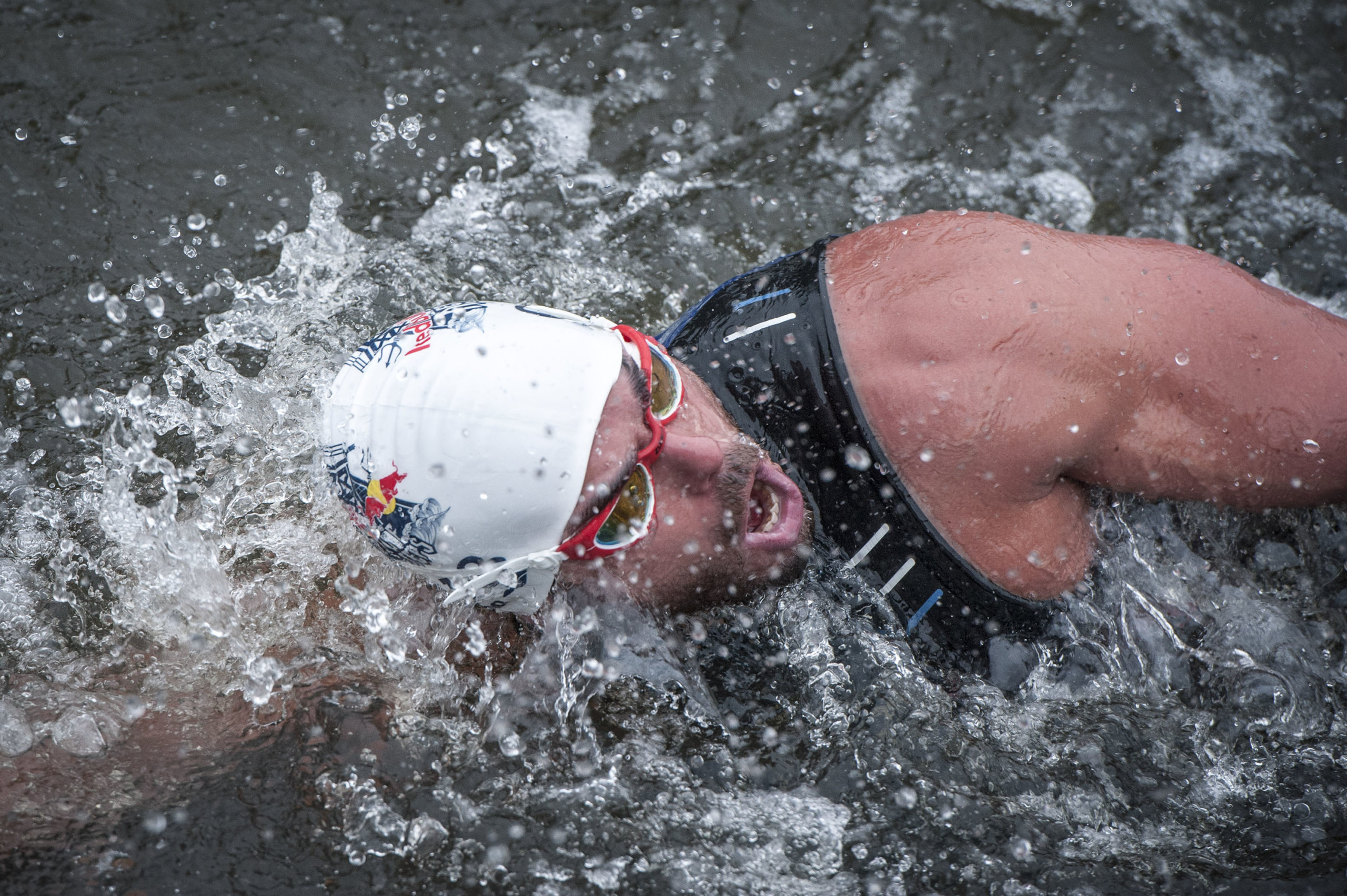
One of the most brutal parts came 70 days into the swim, when I went though the notorious Corryvreckan. It’s essentially a giant whirlpool. I had been swimming for at least 12 hours every single day, so I was really starting to feel the roll. But there was no option but to sprint through the Correyvreckan as quickly as possible. Ships have been pulled down by it, people have lost their lives there. The jellyfish stings were all over and I had pain from some of the other injuries, but the ocean didn’t care about that, or about how little I’d slept.
I remember getting out of that swim exhausted, pulling jellyfish tentacles off of my face and beard. Captain Knight turned to me as I was lying on the deck of the boat, spread-eagle saying, “Good swim. You get six hours of sleep then it’s back in.” He was just voicing what the ocean was demanding of me at that moment. The winter was coming to the UK, and if I was still swimming when it truly hit, there is no way I could stay at it and survive. I still had a long way to go, and there was going to be a lot more suffering before the feat was complete.
The coldest day I experienced, or at least one of them, was on the eastern coast of Scotland, near the port city of Aberdeen. I accidentally left my wetsuit outside overnight, and when I came back to it at two in the morning it was solid ice. I had to crack it to get it into a shape where I could put it on. Once it was on I had to jump into that pitch black water, and there was no option not to. That’s where you have to look beyond motivation and tap into discipline. Doing things no matter the circumstances.
It wasn’t all pain though. There were really great moments where everything came together, like at the top of Scotland, where we hit everything right from the time to the tides. I was swimming at about three knots and the water was moving at seven knots, so I was gliding through the water at 10 knots. That’s somewhere around the cruising speed of a dolphin. I’m not saying I can swim 10 knots, because if we had hit it at the wrong time I could have instead been sent five knots backwards. But instead I got to fly thanks to our planning and Captain Knight.
I’m not sure how to describe how it felt to finish the route and become the first man to swim around Great Britain. I struggled with how to put it into words back then, and still sort of do now. I wouldn’t call it happiness and I wouldn’t call it relief. Since then, I realized that the feeling is what Aristotle was talking about with the term “eudaimonia,” which is about finding happiness through fulfillment. That struggling or suffering to earn happiness is better than just walking around being content. In that moment, I feel like I had earned the smile I was wearing.
Check out Edgley in episodes of Limitless with Chris Hemsworth, now available on Disney+. Find his books here.
The Charge will help you move better, think clearer and stay in the game longer. Subscribe to our wellness newsletter today.
